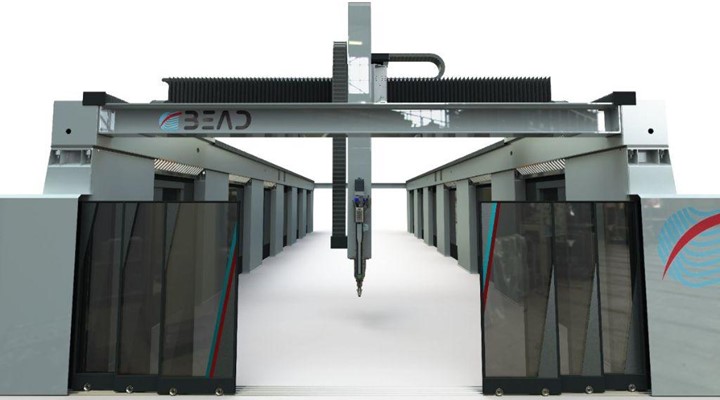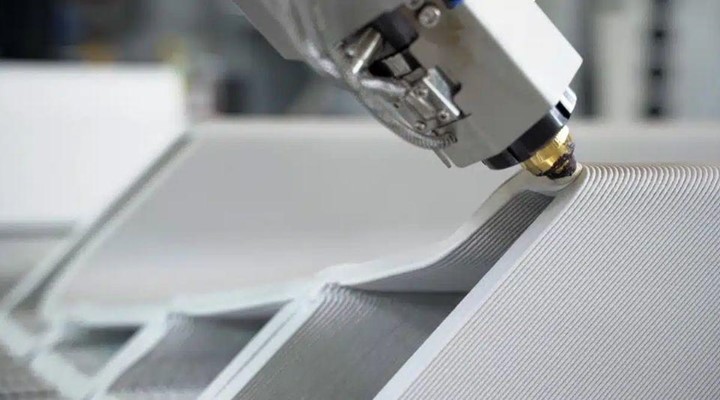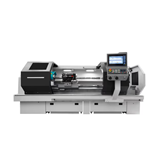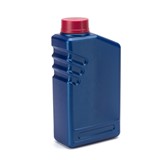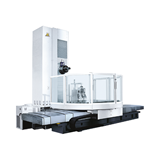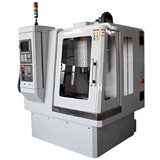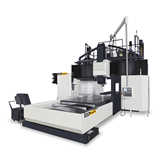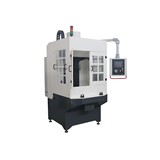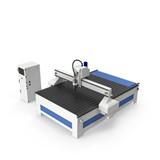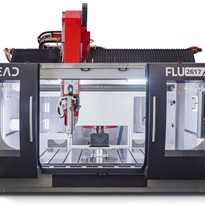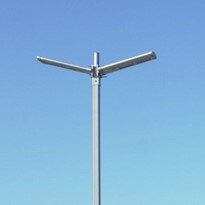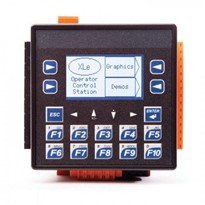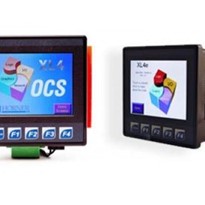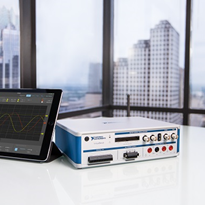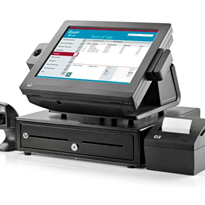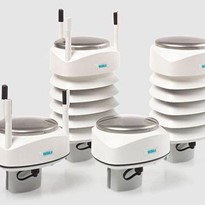Additive manufacturing meets numerical control machining: new production scenarios require new technologies
As a manufacturing technology, 3D Printing or additive manufacturing, is increasingly finding its place: it helps manufacturers to produce faster, providing more design freedom and reducing the costs compared to conventional manufacturing technologies.
The BEAD machine fits into this context, making it possible to 3D print large parts using fibro-reinforced thermoplastic materials.
By integrating the flexibility and speed of additive manufacturing technologies with the precision of the CNC milling, BEAD offers companies an innovative, flexible and customizable technology solution.
By itself, large-scale additive manufacturing cannot deliver the finish and tolerances subtractive manufacturing offers.
On the other hand, subtractive manufacturing is accompanied by a lot of waste, which large-scale additive manufacturing is not.
The combination of additive and subtractive manufacturing therefore gives the best of both worlds: additive manufacturing allows for significantly reduced machining times compared to milling processes, while the latter ensures machining accuracy and repeatability.
The advantages offered by the two technologies
To sum up, the two technologies offer different advantages:
3D printing
- Design freedom
- Near net shape
- Automation
- Recyclable materials
CNC MILLING
- Smooth surface
- Tolerances
- Automation
- Accuracy
BEAD features all these advantages and can be possible in different configurations with variable extrusion outputs, printing volumes and orientations.
Additive Manufacturing application sectors
Automotive and aerospace are the application sectors that have been driving the development of 3d printing technologies. These are sectors where Belotti SpA has been involved since the beginning of its activities and where the company gained an indisputable technological supremacy.
The use of additive manufacturing processes greatly expand the application’s scenarios and, Belotti’s choice to integrate additive manufacturing within its offer, goes in this direction.
The application potential of this technology is endless: the first sectors that are targeted are the automotive, aerospace, marine and design, for which moulds, patterns, tools and final parts were produced.
BEAD technical features and main advantages
These are the main features of BEAD machine:
- Integration of additive and subtractive manufacturing in a single hybrid solution
- 5-axis printing of complex geometries
- 45 degree orientation of the extruder
- Extrusion output from 12kg/h to 80 kg/h to satisfy the different industry needs and their relative build volumes
- Maximum extrusion temperature up to 400°C to print high performance materials
- Electrospindle from 15 to 42 kW
- Milling accuracy up to 0.01 mm/m (linear) and +/- 12 arcsec (rotational)
- Milling toolchange positions from 8 to 60
Main advantages:
- Manual labour elimination for a more automated process: from a CAD geometry to the mould production without the making of a model
- Lower investment and space optimization with respect to the single technologies
- Shorter lead times and reduced production costs
- Less used and waste material for a more efficient production
- Greater sustainability thanks to the use of reusable and recyclable materials
Dimensions up to:
X : 50,000 mm
Y : 11,000 mm
Z : 5,000 mm
Milling
Tool change position: 8 to 60 positions
Milling spindle: 15 to 30 kW
Milling Accuracy: 0.02 mm/m
Printing
Extruder temperature: 400 °C
Extruder output: 12 - 80 kg /hr
Delivery and Service available Australia wide. CNC Machinery Sales has a highly skilled team of in-house Service Engineers servicing all States and Territories as well as our international clients.
Please call for additional information.




